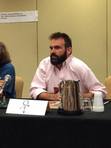The Route of Don Quixote – Hodgsons in Spain Part 2
Ancient towns were built atop hills for many reasons. First, it makes your town look great. Second, if someone comes running along to stab you with something, you can just roll a rock down at them and squash them flat. And lastly, you can see a lot of the surrounding countryside, which gives you the opportunity to see enemies coming. This gives you precious time to ready the squashing rock.
[If you’ve missed Part 1 of this account, it is here. -Jim]
Such is the case with Toledo, situated atop a hill so picturesque that a blind earthworm could paint a masterpiece looking at it. We enjoyed a fantastic view of the town from our rooftop AirBNB terrace, once we managed to arrive a day late and many Euro short.
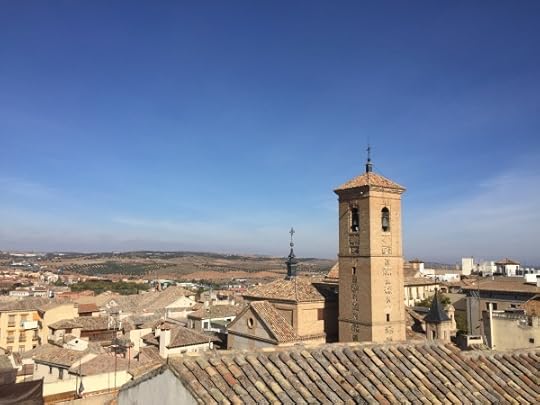
Here we see the tower at Parroquia de San Nicolás de Bari rising above the other rooftops, as we look northeast. Looking east, the highest point of the city is dominated by the Alcázar of Toledo, which is where you’d go in ancient times if you were looking for someone in military dress at whom to jab a sword.
You can always tell a fort built before high powered ranged weapons by the straight-up-and-down, right-angle walls. “Hey, wait, guys, if we built these walls perfectly straight, won’t they be an easy target for a cannon?” a third-century Roman might have asked.
“What’s a cannon?”
“Ah, carry on then.”
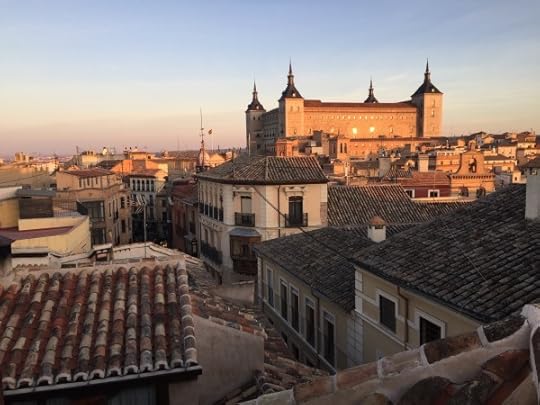
We enjoyed strolling around Toledo, then had a fantastic lunch. One of my favorite things about the places I’ve been in western Europe is that any random lunch will be better by far than what most fine dining establishments in Atlanta can do.
The Spanish eat a big lunch in early afternoon and then disappear until the evening, giving us time to relax, enjoy a glass of wine, and some Spanish language overdubbed American reality TV. This works well for me, because American television is incomprehensible. It might as well be overdubbed in a language I can only barely comprehend.
For example, we saw a lot of this show, called Treehouse Guys, in which a group of craftsmen help rich people hemorrhage money uselessly into a project to build a cottage in a tree.

Except in Spain it appears to be called “Tu Casa en un Árbol,” or “Your house in a tree.” But they don’t change the title graphics of the show, so you look at the screen and it says “Treehouse Guys,” in English, but in the guide it’s listed as “Tu Casa en un Árbol.” They’re not the same thing, but you can see how people who see two languages juxtaposed all the time are better at speaking multiple languages than people who only ever see English.
Also interesting about Spanish TV is that they have all the commercials between programs. Not peppered into the program. Most of their commercials are fever-dream mini-movies about cologne.
The American reality TV format looks even more stupidly repetitive than it is without the long minutes of advertisements interspersed. But then, Spanish-made television is weird too. Whenever a couple is pictured, the lady looks to be about 30 and the gentleman appears to be 58.
Passive Aggressive Belling
Toledo has a serious cathedral, the Catedral Primada Santa María de Toledo. It is considered by some to be the greatest example of okay-boys-this-time-we’re-gonna-build-a-REALLY-fancy-one architecture anywhere.
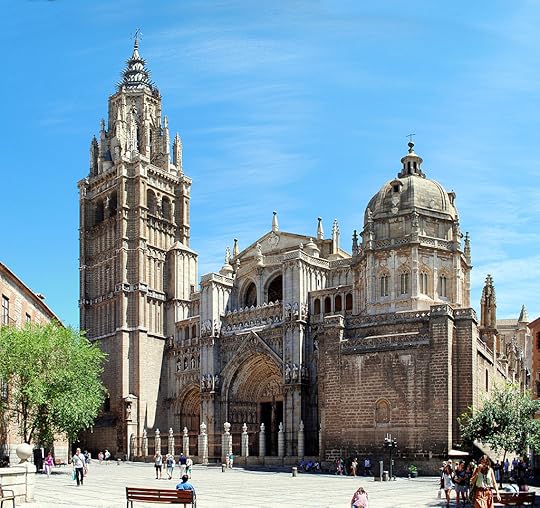
Like any good cathedral, it has a complement of bells atop that clang and bong around at significant moments in time. But elsewhere in the city, as we discovered while drinking wine and contemplating our view of the Alcázar, there is another bell tower that also clangs and bongs but appears to run a few minutes ahead of the cathedral.
I don’t know why that would be, but I assume it is a passive aggressive move on the part of the lesser beller, getting ahead of the cathedral by a minute or two so that your own bells aren’t completely drowned out. Also, the rogue bells appear to be slightly forward in time, which is always stylish.
Windmillin’
In our Toledo ramblings we were near the Ruta de Don Quixote, or the “Lightly thrown ham of Don Quixote.” We didn’t see any windmills that day, but the nature of the trip — particularly our plans for getting to and from Spain by buddy pass — already had a certain quixotic taint, which, it must be said, is one hell of a taint.
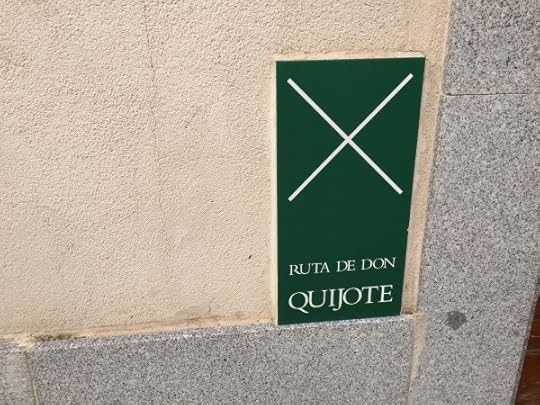
The Spanish are quite proud of Miguel de Cervantes. I snapped this photo of myself near this statue of him as we were leaving Toledo for the train station.
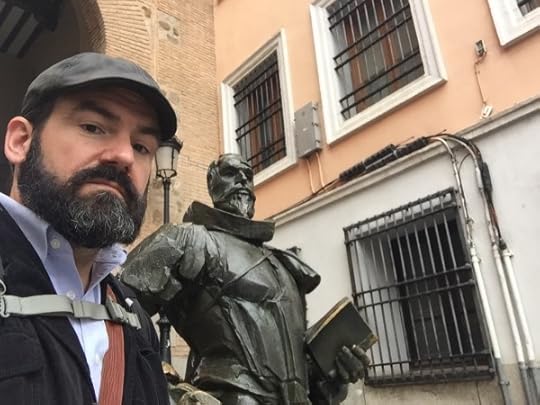
As we walked down to get the Renfe train to Cordoba, we were in good spirits, thinking our trials and tribulations of travel were certainly behind us now, and the rest of our trip would be sunny and without difficulty.

